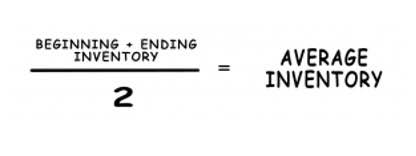
The equity multiplier is a risk indicator that measures the portion of a company’s assets financed by shareholders’ equity rather than debt. The equity multiplier is calculated by dividing a company’s total asset value by the total equity held in the company’s stock. The equity multiplier is also known as the leverage ratio or financial leverage ratio and is one of three ratios used in the DuPont analysis.
Biden-bashing Dem Wall Street investor Whitney Tilson to run for NYC mayor
This ratio is used by creditors to determine the financial risk of lending money to a company. As we mentioned above, equity multiplier only provides a snapshot of a company’s financial leverage at a single point in time. To get a more complete picture of a company’s leverage, you would need to calculate equity multiplier over multiple periods of time. It’s important to note that equity multiplier only provides a snapshot of a company’s financial leverage at a single point in time. Total equity is on a company’s balance sheet or in its shareholder’s equity section. This makes Tom’s company very conservative as far as creditors are concerned.
Equity Multiplier: Definition, Formula & Calculation
In other words, the equity multiplier shows the percentage of assets that are financed or owed by the shareholders. Conversely, this ratio also shows the level of debt financing is used to acquire assets and maintain operations. Calculation of the equity multiplier is relatively simple and straightforward.

New home sales plummet 17% to 2-year low as rising mortgage rates sideline buyers
- Depending on the industry standard, businesses can determine whether this ratio is higher or lower.
- Low equity multiplier, on the other hand, indicates that a company is less leveraged and has more equity financing.
- As an investor, if you look at a company and its multiplier, you would only be able to tell whether the company has been using high or low financial leverage ratios.
- The equity multiplier is a ratio used to analyze a company’s debt and equity financing strategy.
- In this case, company DEF is preferred to company ABC because it does not owe as much money and therefore carries less risk.
Investors commonly look for companies with a low equity multiplier because this indicates the company is using more equity and less debt to finance the purchase of assets. Companies that have higher debt burdens could prove financially riskier. High equity multiplier indicates a higher degree of financial risk, since the company is more reliant on debt financing. Low equity multiplier indicates a lower degree of financial risk, since the company is more reliant on equity financing. On the other hand, company DEF, which is in the same sector as company ABC, has total assets of $20 million and stockholders’ equity of $10 million.
Because their assets are generally financed by debt, companies with high equity multipliers may be at risk of default. Verizon’s https://www.bookstime.com/ much lower proportionate shareholder equity value indicates that the business relies more heavily on financing from debt and other interest-bearing liabilities. The company’s telecommunications business model is more reminiscent of utilities firms, which have stable, predictable cash flows and typically carry high debt levels. The equity multiplier is a great way to calculate the value of an equity investment.
- This caused some weakness in US futures, but the losses were quite modest.
- A lower equity multiplier indicates a company has lower financial leverage.
- Net profit margin, asset turnover and the equity multiplier are combined to calculate ROE, which allows analysts to consider the relative of each impact separately.
- 2) To increase the equity multiplier through decreasing equity, a company can buy back shares of stock or issue a special dividend.
- Global Banks feature a high multiplier, implying that the industry relies highly on debt.
Mom who racked up over $3K in debt buying Christmas gifts reveals how she’s saving money this holiday season
This is not a problem while the interest rate environment is benign, but it’s a risky strategy when conditions change. As such, keeping an eye on the equity multiplier in the context of how a company generates earnings is a good idea. The equity multiplier table below shows a very impressive increase in ROE over the 2013 through 2022 period. A high equity multiplier leads to a higher return on equity but at the cost of increased risk.

1) To increase the equity multiplier through increasing debt, a company can take on more debt. This will increase the numerator of the equity multiplier equation, while keeping the denominator (equity) constant. Such companies have predictable cash flows and optimal operations.
- It is difficult to know the real picture of the company by just looking at one ratio, and the same holds true for the equity multiplier ratio as well.
- That said, a company can always generate a higher ROE by loading up on debt, so looking at how the equity multiplier plays a role in producing ROE is useful.
- This means that for every $1 of equity, Company XYZ has $2 of debt ratio or other liabilities.
- But still, in order to evaluate the financial health of the business, it is always a good idea to use them in conjunction r combination with other ratios and measures.
- In other words, Illinois Tool Works is excellently sweating its assets, even if those assets were supported by taking on more debt.
- Such companies have predictable cash flows and optimal operations.
Jaguar boss defends new ‘woke’ rebrand after ad airs featuring man in a dress, androgynous models

The corporation probably has very little debt, and its ownership is greatly diluted if the equity multiplier is high. A low equity multiplier, on the other hand, suggests that the company is deeply indebted, which raises risk. The multiplier ratio is also used in the DuPont analysis to illustrate how leverage affects a firm’s return on equity. Higher multiplier ratios tend to deliver higher returns on equity according to the DuPont assets = liabilities + equity analysis.

What Is the Equity Multiplier?
The equity multiplier is just a calculation, so it doesn’t consider the risk of the investment or your personal situation. You can use an equity multiplier calculator or manual equity multiplier calculation. Once you have the equity percentage, you can see financing between equity.


